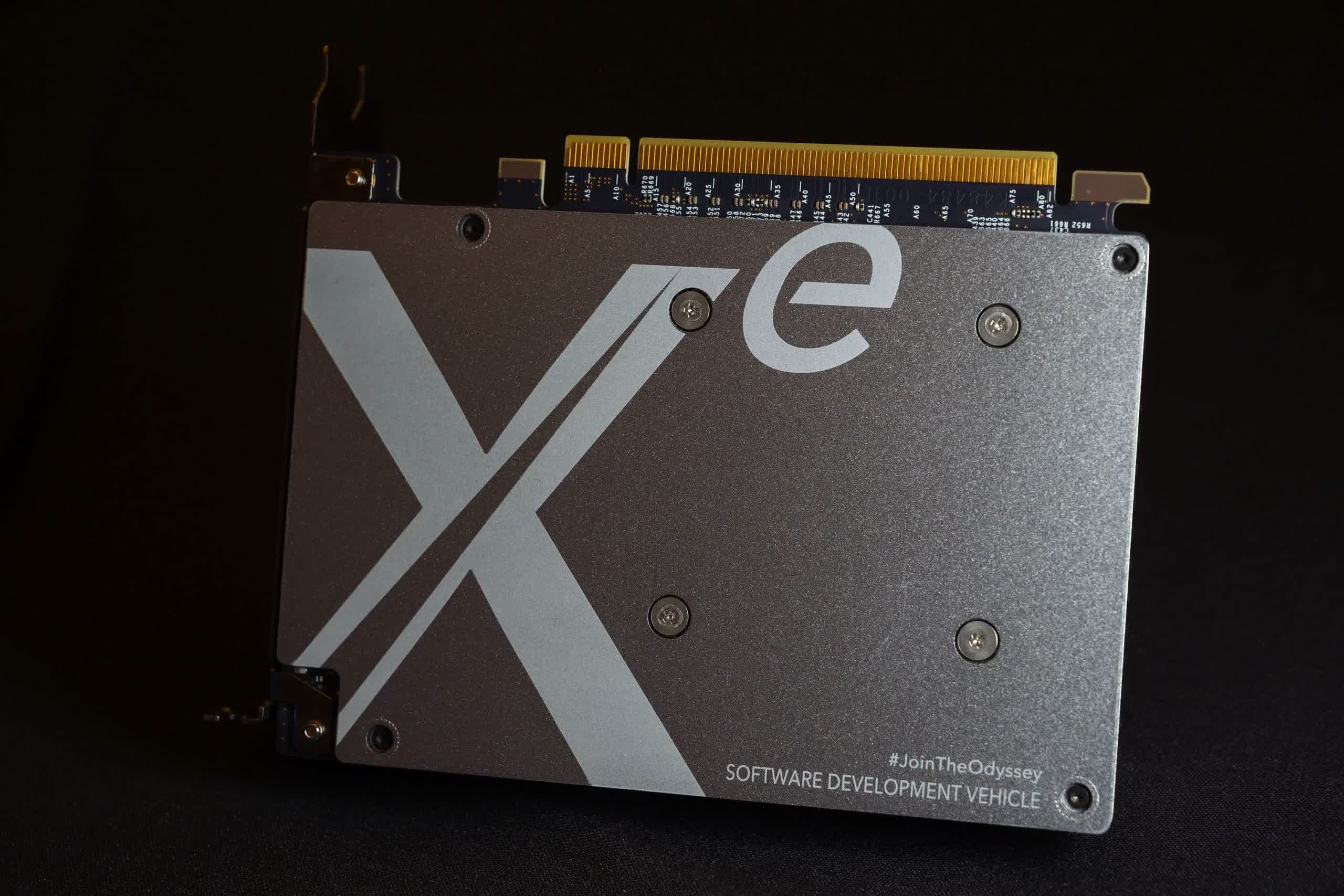Why it matters: Intel's Discrete-Graphics-2 GPUs have been bobbing on the horizon for years. Now, while demand is insatiable and rival manufacturers have got nothing new near readiness, is the optimal time for Intel to start shipping their GPUs.
On Thursday, Intel's Pete Brubaker said that "DG2 is right around the corner" in a tweeted advertisement for an opening with Intel's development team. The listing is for a 'Senior Game Developer Relations Engineer' that can help game developers optimize their titles for new hardware. It's a job that needs to be started months before the launch of a new architecture, which already places Brubaker's comments in contention with reality.
Igor Wallossek at Igor's Lab says that Intel has already approached at least Asus and MSI to negotiate. But he's also said that he's been told by trusted sources that Intel will begin manufacturing the little DG2 chips in November or December, and will begin manufacturing the big chips in January or February of 2022. A timeline like that would violate Intel's promise that DG2 would release this year, but Wallossek has a better history of accuracy than Intel's infamous multi-year forecasts.
The report published by Igor's Lab also includes some new specifications of the DG2 stack.
Intel's repeatedly confirmed that they're using 512, 384, 256, 196, and 128 EU models, where each EU is similarly performant to eight cores (shaders). Here are some new leaked details of the clock speeds and memory configurations of the laptop versions.
Rumored Intel Xe DG2 mobile specifications
| SKU 1 | SKU 2 | SKU 3 | SKU 4 | SKU 5 | |
|---|---|---|---|---|---|
| EUs | 512 | 384 | 256 | 196 | 128 |
| Boost Clock | 1100 MHz | 600 MHz | 450 MHz | ? | |
| Turbo Clock | 1800 MHz | 1400 MHz | ? | ||
| Memory Capacity | 16 GB | 12 GB | 8 GB | 4 GB | |
| Memory Speed | 16 Gbps | ||||
| Memory Type | GDDR6 | ||||
| Bus Type | 256-bit | 192-bit | 128-bit | 64-bit | |
| TDP (exc. memory) | 100 W | ? | |||
The second anniversary of the leak that first revealed DG2's 512, 256, and 128 EU configurations is two months away. When I wrote about that leak, I commented that "a 512 EU graphics core operating at 1800 MHz would reach 14.7 TFLOPS, a little more than an RTX 2080 Ti." Two years ago that was thrilling, and while it's still superb performance for a mobile GPU, it's no longer flagship performance.
I don't like to discredit products before they're released, and of course, Xe is an entirely new architecture whose performance can't be easily predicted. But I'm worried that Intel is missing their moment. It's clear, for example, that Rocket Lake would've been a more competitive product if Intel hadn't delayed it.
Unless it could reach absurdly high clock speeds, a 512 EU GPU with midrange GDDR6 memory couldn't compete with an RTX 3090 on the desktop. But if Intel could bring something with similar specifications to those above to the laptop market before Nvidia was ready, then they could begin dethroning the leather-clad chef and his cooks.
Intel has a brief window of opportunity to enter and rattle the GPU market. Now we'll watch and see if they'll be ready in time.
